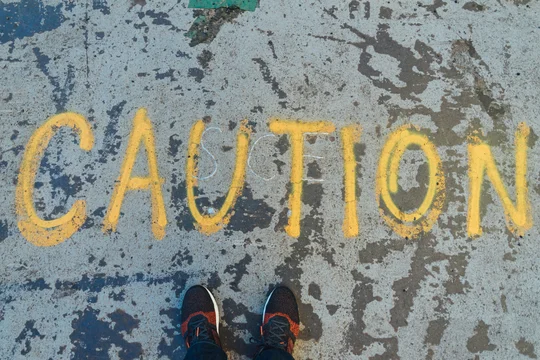
I always think it's worth paying attention to how the judges handle the presentation of evidence at trial, changes that may seem small (like bifurcation) can have a big impact on how the trial actually goes. A bifurcated trial can obviously lead to a much shorter trial, if the defendant prevails on the first phase. But even if it doesn't, bifurcation really impacts the kinds of trial themes that the plaintiff can put up, for example making it harder to paint the defendant as a bad actor from the start.
Judge Williams recognized that effect earlier this month in his order granting bifurcation of a patent trial—and suggested that restricting plaintiff from presenting those themes favors bifurcation:
The Court finds that a reduction in prejudice to BSC weighs in favor of bifurcation. [Defendant] BSC argues that [plaintiff] UT is " likely to tell a story" that UT " got an important patent and told [BSC] about their technology; [BSC] was greedy, intentionally stole the invention," and profited therefrom; and UT "got nothing." D.I. 248 at 10. That story, BSC argues, has nothing "to do with the objective question of whether the [Accused Products] meet[] all the limitations" of the Asserted Claims of the '296 patent . . . or whether the patent is invalid." Id. UT does not challenge BSC's description of UT's likely trial narrative. . . . Rather, UT argues, the need to present a piecemeal case to the jury will prejudice UT. Id.
. . . UT's description of BSC's alleged willful infringement could encourage a jury to find that BSC infringed the '296 patent for reasons unrelated to a comparison of the Accused Products to the Asserted Claims. The Court also [previously] found that "UT's evidence of post-suit willfulness is limited." . . . That finding increases the risk that UT's willfulness evidence could bias the jury's infringement and invalidity decisions. . . . When the Court weighs the risk of prejudice to BSC against the ability to mitigate that prejudice (e.g., through a jury instruction), the Court finds that the potential to reduce prejudice to BSC weighs in favor of bifurcation.
That's interesting, because (obviously) parties very often try to persuade juries that the opposing party is the bad guy in one way or another. Other than the fact that post-filing willfulness evidence was particularly weak here, this finding of prejudice would seem to apply to most cases.
The Court ultimately bifurcated the case into two phases, before the same jury:
- Direct infringement and invalidity
- Willful infringement, damages, knowledge, and intent for induced infringement
Even a Chance of Shorter Trial = Resources Saved
The Court also found, unsurprisingly, that a chance of a shorter trial favors bifurcation. It also pointed out that having jury deliberations in the middle of the trial does not impact efficiency:
The Court could also save multiple days of trial—e.g., by eliminating expert damages testimony—if the jury finds for [defendant] BSC on infringement or invalidity. UT argues that no reduction in trial time would result if the jury finds for UT in the first phase. D.I. 253 at 7-8. However, the Court need not fully discount that potential reduction in trial time because it is not guaranteed. . . . . UT is also incorrect that jury deliberation in the middle of trial will increase case length. . . . The jury must deliberate as to the same issues, whether after a first phase or after the whole trial. Thus, the Court finds that the potential savings in judicial resources from bifurcation far outweigh the minimal costs a phased trial may impose.
That favors bifurcation in pretty much every patent case, as does the argument—with which the Court agreed—that bifurcation in a patent action helps juror comprehension:
[A] focus only on technical issues in the first phase, such as what the parties argue that the prior art teaches, will help jurors comprehend evidence of invalidity and infringement.
Re-Calling Witnesses Is Not (Necessarily) the Same as Repeating Evidence
When we last talked about a bifurcation motion before Judge Williams, he denied bifurcation after finding that it would lead to repetition of evidence on the same issue. That case, however, involved a request to bifurcate a license defense into a separate trial, rather than bifurcating a single trial into a phase for direct infringement and invalidity and then a second phase for the remaining issues.
Here, Judge Williams found that re-calling witnesses does not necessarily lead to repetition:
UT argues that overlapping testimony between BSC's two proposed phases would require additional trial days. . . . For example, in both its direct and willful infringement cases, UT will discuss and present witness testimony relevant to a prior BSC patent application and BSC's application to FDA to sell the Accused Products. . . . However, the use of a single jury in both trial phases will allow jurors to carry background about witnesses and documents from the first phase into the second phase of trial. Further, UT acknowledges that the substance of several of the witnesses' testimony will differ by phase. For example, UT will call "Defendant's corporate representative and employees such as Dr. Yen Lane Chen" at the infringement phase to testify "that fibers can be applied to and formed on the outer surface of a stent," but will call them at the willfulness phase to testify about interactions with the inventor of and knowledge of the '296 patent. . . . Thus, UT's witnesses may not need to repeat testimony in both trial phases.
Based on the Court's opinion here, and the fact that parts of it would apply in any typical patent case, I expect we may see more defendants moving to bifurcate patent trials in Judge Williams cases going forward.
If you enjoyed this post, consider subscribing to receive free e-mail updates about new posts.





